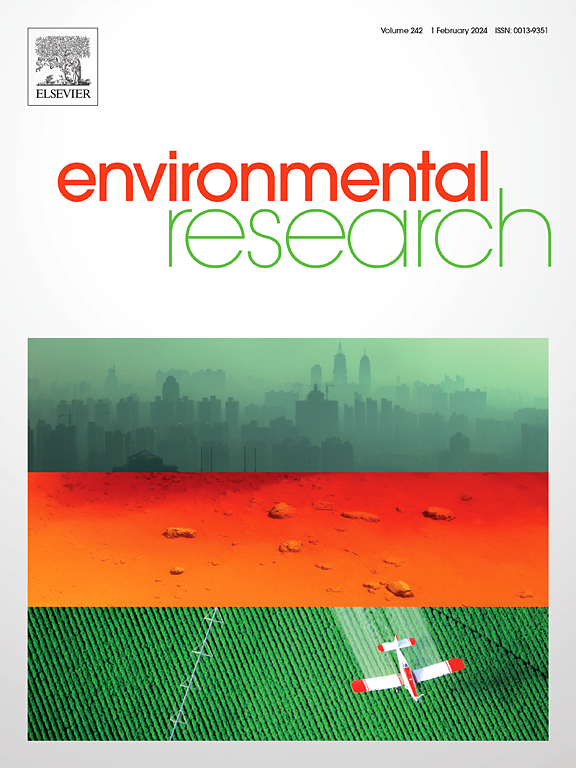评估微塑料对水生生态系统和人类健康影响的基于风险的综合框架。
IF 7.7
2区 环境科学与生态学
Q1 ENVIRONMENTAL SCIENCES
引用次数: 0
摘要
微塑料在环境和食物网中的广泛存在对水生生态系统和人类健康都是一个严重的问题。大多数研究主要使用单一工具来评估对生物和人类的风险,在全面的风险评估中留下了空白。本研究对台湾主要河流天然河口的地表水及野生牡蛎的MP丰度进行调查。此外,这些数据还用于开发基于风险的综合框架,以评估从生物到人类MP暴露于海鲜消费的潜在风险。我们评估了水生生态风险商(RQ)、牡蛎死亡率超标风险(ER)、人类MP摄入暴露和人类肝损伤ER。我们的数据显示,在水和牡蛎中,MP丰度分别为0.025-4.701项/m3和0.015-2.374项/g(湿重)。虽然RQ值表明水生生态系统的风险可以忽略不计,但牡蛎暴露于MPs的死亡率ER结果显示,牡蛎死亡率增加6%(风险为10%)。MPs对人血清中丙氨酸转氨酶(ALT)水平的风险曲线的概率表示很低,表明对人类的健康风险很小。总的来说,我们的数据表明,依赖单一的风险指标可能会低估潜在的风险,建议使用多方面的工具来评估生物体和人类健康。本文章由计算机程序翻译,如有差异,请以英文原文为准。
Risk-based integrated framework for evaluating effects of microplastics to aquatic ecosystems and human health
The widespread presence of microplastics (MPs) in environments and the food web is a serious concern for both aquatic ecosystems and human health. Most studies have used single tool to assess risks primarily to organisms and humans, leaving gaps in comprehensive risk assessments. This study conducted an investigation of MP abundances in surface water and wild oysters from natural estuaries of major rivers in Taiwan. Additionally, the data also used to develop an integrated risk-based framework for evaluating potential risks from organisms to human MP exposure to seafood consumption. We assessed aquatic ecological risk quotients (RQ), oyster mortality exceedance risk (ER), human MP intake exposure, and human liver damage ER. Our data showed that MP abundances ranged from 0.025 to 4.701 items/m3 and 0.015–2.374 items/g (wet weight) in water and oysters, respectively. Although RQ values indicate negligible risk for aquatic ecosystems, but oyster mortality ER results from oysters exposed to MPs showed a 6 % increase in mortality (10 % risk). The probabilistic representation of risk curves of MPs for alanine aminotransferase (ALT) levels in human serum was found to be low, indicating minimal health risk to humans. Overall, our data suggest that relying on a single risk indicator may underestimate potential risks, multi-faceted tools are recommended for assessing organism and human health.
求助全文
通过发布文献求助,成功后即可免费获取论文全文。
去求助
来源期刊

Environmental Research
环境科学-公共卫生、环境卫生与职业卫生
CiteScore
12.60
自引率
8.40%
发文量
2480
审稿时长
4.7 months
期刊介绍:
The Environmental Research journal presents a broad range of interdisciplinary research, focused on addressing worldwide environmental concerns and featuring innovative findings. Our publication strives to explore relevant anthropogenic issues across various environmental sectors, showcasing practical applications in real-life settings.
 求助内容:
求助内容: 应助结果提醒方式:
应助结果提醒方式:


